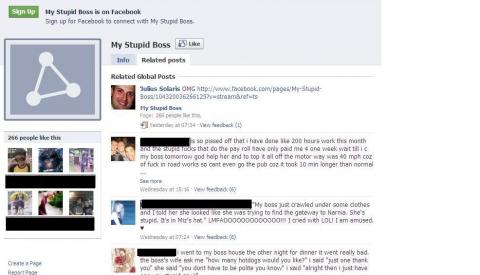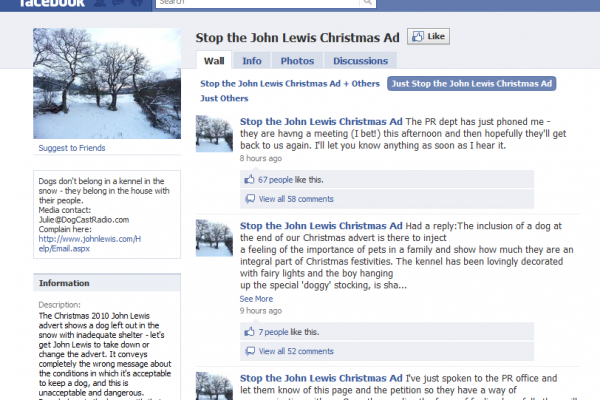Social shaming is becoming a bit of a problem for brands. They struggle with the question: how can you stop people from expressing themselves on social media? The answer: you can’t. Clear communication, excellent levels of customer service and a cohort of loyal brand advocates are really the only defence for brands.
WHAT IS SOCIAL SHAMING?
The most recent (and talked about) example didn’t involve brands, but people attending the PyCon conference. Adria Richards overheard a couple of guys chatting about “forking the repo” (which apparently means contributing to, or continuing to develop an existing coding project), when, according to her blog post on the incident (well worth a read by the way), one of them started to make rather juvenile dongle jokes.
Now, Adria was clearly offended by these comments, but rather than take the guys to one side and explain to them how inappropriate they were being, she decided to take their pictures and tweet about their conduct.

Pixelated image from ABCNews
PyCon, which had a strict code of conduct, saw the tweet and pulled them out of the hall. Adria, proud of what she had achieved, then blogged about the incident, and included the tweet with the pictures in her post. Tech blogs reported on the post, and Adria fell victim to some vile abuse on Twitter. In the end, both one of the men and Adria were fired.
It wasn’t until I read the original blog post that I felt I could understand more about what had gone on. It was a ‘last straw’ moment, something that had been building up throughout the conference. Okay, she chose to use social shaming, rather than confronting them about their language, but bad behaviour has to be stopped, right?
How did we get here?
The PyCon tweet is part of a larger public shaming trend. Twitter’s now used by popular blogs, such as Jezebel and BuzzFeed, to put the spotlight on people who express anything from an inability to spell, to using racist language. Brands can’t escape this either. From campaigning groups, to disgruntled individuals, people are increasingly turning to social media channels as their first port of call when they have a bone to pick with a brand.
Traditionally when a customer had a complaint, they could call the customer care line, or email customer services amongst other options (although somewhere around the sixth minute of listening to Justin Bieber on a loop, interspersed with a robotic woman telling them that their call is very important – the customer is likely to be extremely frustrated). Now, they take the problem to social media channels. All well and good, if they’re contacting the brand directly on its dedicated Twitter account. But if that doesn’t work, then it’s all too easy to call out the brand publicly.
A customer complaint used to be just that. A private matter raised and resolved between the customer and the business (maybe extending out to friends and family of the customer). Now, if a complaint isn’t resolved quickly (or is handled badly), the resulting social media name and shame can represent a reputational issue for brands.
There’s no time-delay on social media: it’s all too easy to shame a company, expecting them to pick up the mention and respond quickly. Perhaps it’s understandable when it’s the last ditch attempt to get someone to take notice, or when the company’s done something stupid.
Brand public shaming in action
United Airlines
I don’t know if this is the first example of a brand being publically shamed on social media, but it’s arguably the best. For anyone that missed it, in 2009, musician Dave Carroll took a United Airlines flight, during which the airline broke his guitar. In this case, Dave did the right thing. He tried to get the airline to recognise its responsibility and compensate him for the damage – in fact he tried for nine months. But when United failed to get the compensation, he and his band (Sons of Maxwell) made the now famous United Breaks Guitars (which now has almost 13 million views).
The success of the first song led to a second one, recorded in August 2009, charting the continuing saga. It seems that United hadn’t learnt its lesson yet.
I’m inclined to call this fair play. The airline broke something valuable and necessary to the musicians livelihood. It was unresponsive and dismissive. Yet, I think this is an extreme example, not just of how far someone can go to publically shame a brand, but of how bad a brand’s customer service can actually be.
DKNY
The most recent example of a brand being publically shamed that I can think of is that of DKNY. It approached a photographer for permission to use his work in their store window displays, but he turned down their offer of $15,000 and requested more. They declined. A few months later, he was sent a picture of a DKNY storefront in Bangkok displaying his images. Rather than contact the brand directly, he posted a call to arms on his Facebook page.

Almost 30,000 people shared his post in under five hours. DKNY apologised, saying it was a genuine mistake that the display was produced for internal use only, and it promised to pay the YMCA $25,000 as recompense. A good result all round.
Megadeth vs Men’s Warehouse
When Dave Mustaine’s (the lead singer of Megadeth) Christmas gift to his manager did not arrive, he contacted the brand for an answer. They couldn’t give him one, so he posted a long rant about it on the bands Facebook page. It attracted more than 1,400 comments, including one from Men’s Warehouse:

While it can be seen as petulant for a band with 5.8 million Facebook fans to post about a customer service issue like this, it’s a perfect example of the problem. Dave couldn’t get a satisfactory response to his problem via conventional means, and therefore, frustrated, he turned to social media. ‘Lo! he gets a rapid response.
#hmvXFactorFiring
Okay, the HMV Twitter take-over wasn’t a customer service issue, but it was an incident of public shaming. The employee who live tweeted the redundancy process explained that she had repeatedly tried to make her managers understand how important social media was, and why they needed to know more about it. They didn’t listen to her.
Has social shaming gone too far?
The first port of call, in my view, should be to contact a brand – whether that’s on social media or any other channel. But when that fails, the new issue facing brands is the social name and shame. And it’s not going away any time soon.






